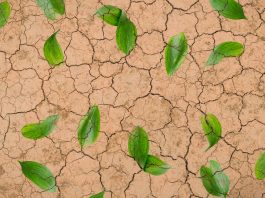A research team from the University of Malaga has designed ‘Agua+S,’ which is a circular economy project that proposes a sustainable solution for drought.
What is Agua+S?
The Domotics and Energy Efficiency Institute (IDEE) at the University of Malaga has a sustainable solution for drought. Agua+S proposes the application of a sustainable sea water desalination cycle based on three coordinated infrastructures.
The project proposes the deployment of a desalination plant located near the sea. A network of pumping stations would push desalinated water through the course of a river. Following this, the water would move through a floating solar farm, which would be installed over the water of a reservoir to supply the required energy to perform the whole process.
This is considered as an innovative proposal in the scientific community. This is because it is the first time that these three facilities are utilised together in a completely replicable way; the results could be duplicated in any river basin with a reservoir near the coast distributing drinkable water for both irrigation and human consumption. Thus, providing a sustainable solution for drought.
What are the benefits of this technology?
“Agua+S will facilitate the production of 20Hm3 of water annually, which could be extended, as this is a modular project,” explained Francisco Guzmán, a promoter of this sustainable solution for drought, who emphasises the clean character of this solution, from the energy produced to the process in which to obtain it.
The Professor at the Industrial Engineering Schools guarantees that the commissioning of the project does not require the expropriation of land, nor the installation of additional piping, as the distribution network is already in place. Furthermore, the water supplied to the reservoir, when mixed with the water it stores, would not require mineralisation.
Additionally, another positive aspect of this sustainable solution for drought is the generation of brine from the desalination process, which would result in a parallel industry for the creation of hydrogen, salt, chlorine, and other sustainable chemical derivatives of commercial interest.
The engineers of the IDEE suggest new possibilities to increase power generation capacity by employing solar energy from the floating photovoltaics.
“These infrastructures present multiple advantages over ground facilities thanks to the absence of dust, the solar reflection over water surface and the cooling effect of water on the panels,” researchers observed. “Existing facilities have shown a 20% increase in energy yield.”
In fact, as they explain, ecological studies demonstrate that a 30% of the reservoir surface could be covered with no risk of altering its biological balance.
How soon can this sustainable solution for drought be implemented?
The Agua+S initiative could be implemented in less than a year and has so far been presented to the Senate of Spain and it is being studied by the Government of Andalusia in order to be declared as ‘Strategic Project.’
Led by IDEE, its implementation would require the creation of a consortium, in which private companies would participate, but ultimately, the water distribution would be carried out by the official distributor of the area, and the energy produced would be injected to the electrical grid for general utilisation.
The ultimate goal of Agua+S is to join forces of all administrations and agents involved in order to combat the lack of hydrological resources and electric power that is already striking the province and Southern Europe.
To keep up to date with our content, subscribe for updates on our digital publication and newsletter.









